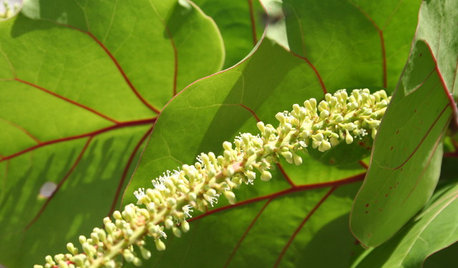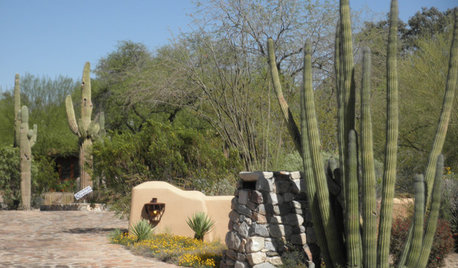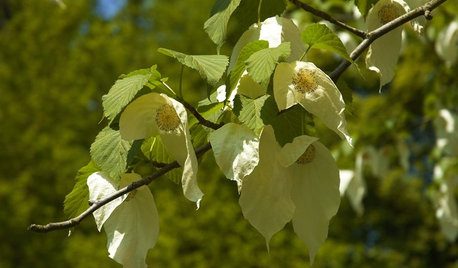Hi all.....
I have various records but none handy for garden web clips (yet) so I'm going to copy something to clip my file here for reference until I organize my home files, print everything and bind them.
I relate much to this in my little pocket of moisture in Zone 7a/6B Oklahoma, right now. So sad for others who are experiencing the seemingly eternal drought.
This quote is actually about Japanese Maples. I have a new Japanese Maple start Wrong time of year. Studying to see if I can keep it til spring and found this amongst the information.
______________________________________________
Zones for hardiness
This is a subject everyone is interested in but there is little scientific information available. Most Japanese maples will live planted out in zones 5b and warmer (some can be grown in 5a and colder). But the zones are changing and the new zone chart based on the last 20+ years (Global Warming) has moved my area from 5b to 6a, based on temps during that period. ( a new zone chart is in the works with supposedly micro climate areas, but it�s accuracy like all zone charts will always be suspect) Zone assignments should be taken with a grain of salt. You might have good luck with a certain cultivars, but 5 miles away a good buddy of yours won�t. This is true even though he/she is using the same exact cultivation techniques and placement as you are. And your neighbor�s yard or even one part of your yard may be warmer and more Japanese maple friendly. These are called Micro-climates, or as in the case of within your yard or neighborhood I call them "mini-micro climates". Wind protection from a fence, being higher up, such as on a hill, being close to large water bodies, snow fall acting as insulation� All these factors can cause microclimates that allow one person in colder zones, or colder areas within warmer zones, to be more successful while another has less success. The -20 area of my sap app and in my section under "available trees" (at top of this page) in the pull-down labeled "other hardy Asian maples" will show those most hardy Jms should be given first priority by those 5a "colder" folks. Most other cultivars I have listed on the site will also likely do just fine too. If you are a bit gun shy about spending $$ on something that is not guaranteed, pick those that are listed as very hardy or just keep it containerized, which really is no big deal as you will see below.
Also note that, as happened in 2007, if we have another prolonged warm March period, allowing Japanese maples to fully leaf out, followed by a prolonged teen and twenty degree period in April� then all bets are off for survival of many Japanese maples, period. This very odd occurrence caused extreme damage and destruction (and a boon for many Japanese maple sellers with many needing to replace dead trees !) to many of these trees as far south as Atlanta, and from Texas to the east coast. This unusual occurrence actually did more damage the farther south you went in zones 6 and 7+. Although many trees survived and re-leafed, many others had severe bark damage from flowing sap that froze and popped the bark off causing eventual death. I had some losses here, but 90 miles south, in St. Louis, it was devastating. Ironically, Chicago and other zone 5a areas in southern Wisconsin, that are generally less conducive to growing Japanese maples and more apt to get late frosts and freezes, were untouched and had a great growing year. This was considered a once in (a lifetime) 50 -100 year happening. But with changing weather patterns, global warming, etc who knows? As they say, "the only thing certain in life is death and taxes". So this information on hardiness should also be prefaced with (depending on having normal weather conditions for your area or at least not having historically bad weather conditions)". Also remember some Jm�s bud earlier than others . This will be of no help in an extreme situation like we had in �07, but under normal spring conditions it can make a BIG difference . If a cultivar has an "early" budding moniker and you live in areas that often get late frosts especially areas where warm periods are followed by an occasional frost period you best stay clear of that cultivar. If you pick a cultivar , read my description where these early budding trees will be noted . I use to just not sell them. But with having so many southern customers and ones growing Jms in containers I decided to do so with the ones I consider truly super cool. But I list and carry them list with a statement concerning early budder�s in each description."
Random Site I found This At
















chickencoupeOriginal Author
Related Professionals
West Milford Landscape Architects & Landscape Designers · Accokeek Landscape Architects & Landscape Designers · Beachwood Landscape Architects & Landscape Designers · New Mexico Landscape Architects & Landscape Designers · Redondo Beach Landscape Architects & Landscape Designers · Salem Landscape Architects & Landscape Designers · Fishers Landscape Contractors · Forest Hills Landscape Contractors · Mount Kisco Landscape Contractors · Ponte Vedra Beach Landscape Contractors · Round Lake Landscape Contractors · Vermilion Landscape Contractors · Selma Landscape Contractors · Philadelphia Decks, Patios & Outdoor Enclosures · Pleasant Grove Decks, Patios & Outdoor Enclosures